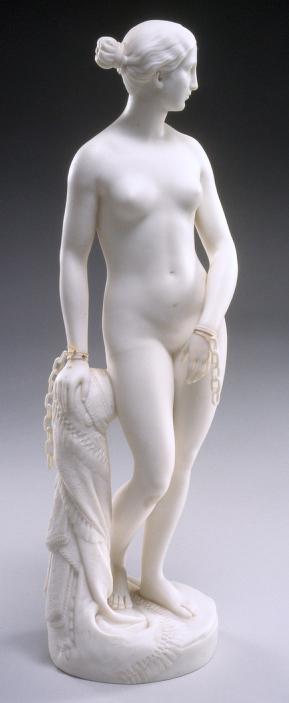




Advanced Search
| Online Collection |
|
|||||||||||||||||||||||
|
"The Greek Slave" created a decade or so after the Greek War of Independence, was originally the work of Hiram Powers, a Vermont artist. It toured the country in 1847-48, drawing large crowds at every stop. Her nudity was accepted by some as an indication of her Christian purity (note the cross below her hand). It was popular with abolitionists who saw the chains as a reference to Southern slavery. Minton & Company translated Powers' work into Parian ware. Somewhat softened and less detailed, Minton's "Greek Slave" was produced for the new middle-class who purchased copies and placed them in their parlors.
|
"The Greek Slave" Statuette
|
| |
Home | Online Collection | Things
To Do | Turns
Exhibit | Classroom | Chronologies | My
Collection
About This Site | Site Index | Site Search | Feedback


